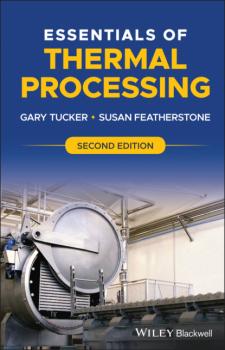ТОП просматриваемых книг сайта:
ЛИТМИР - LITMIR.BIZ - Электронная библиотека
Скачивание или чтение онлайн электронных книг.Аннотация
When considering the idea of using machine learning in healthcare, it is a Herculean task to present the entire gamut of information in the field of intelligent systems. It is, therefore the objective of this book to keep the presentation narrow and intensive. This approach is distinct from others in that it presents detailed computer simulations for all models presented with explanations of the program code. It includes unique and distinctive chapters on disease diagnosis, telemedicine, medical imaging, smart health monitoring, social media healthcare, and machine learning for COVID-19. These chapters help develop a clear understanding of the working of an algorithm while strengthening logical thinking. In this environment, answering a single question may require accessing several data sources and calling on sophisticated analysis tools. While data integration is a dynamic research area in the database community, the specific needs of research have led to the development of numerous middleware systems that provide seamless data access in a result-driven environment. Since this book is intended to be useful to a wide audience, students, researchers and scientists from both academia and industry may all benefit from this material. It contains a comprehensive description of issues for healthcare data management and an overview of existing systems, making it appropriate for introductory and instructional purposes. Prerequisites are minimal; the readers are expected to have basic knowledge of machine learning. This book is divided into 22 real-time innovative chapters which provide a variety of application examples in different domains. These chapters illustrate why traditional approaches often fail to meet customers’ needs. The presented approaches provide a comprehensive overview of current technology. Each of these chapters, which are written by the main inventors of the presented systems, specifies requirements and provides a description of both the chosen approach and its implementation. Because of the self-contained nature of these chapters, they may be read in any order. Each of the chapters use various technical terms which involve expertise in machine learning and computer science.
Аннотация
Seismic reservoir characterization aims to build 3-dimensional models of rock and fluid properties, including elastic and petrophysical variables, to describe and monitor the state of the subsurface for hydrocarbon exploration and production and for CO₂ sequestration. Rock physics modeling and seismic wave propagation theory provide a set of physical equations to predict the seismic response of subsurface rocks based on their elastic and petrophysical properties. However, the rock and fluid properties are generally unknown and surface geophysical measurements are often the only available data to constrain reservoir models far away from well control. Therefore, reservoir properties are generally estimated from geophysical data as a solution of an inverse problem, by combining rock physics and seismic models with inverse theory and geostatistical methods, in the context of the geological modeling of the subsurface. A probabilistic approach to the inverse problem provides the probability distribution of rock and fluid properties given the measured geophysical data and allows quantifying the uncertainty of the predicted results. The reservoir characterization problem includes both discrete properties, such as facies or rock types, and continuous properties, such as porosity, mineral volumes, fluid saturations, seismic velocities and density. Seismic Reservoir Modeling: Theory, Examples and Algorithms presents the main concepts and methods of seismic reservoir characterization. The book presents an overview of rock physics models that link the petrophysical properties to the elastic properties in porous rocks and a review of the most common geostatistical methods to interpolate and simulate multiple realizations of subsurface properties conditioned on a limited number of direct and indirect measurements based on spatial correlation models. The core of the book focuses on Bayesian inverse methods for the prediction of elastic petrophysical properties from seismic data using analytical and numerical statistical methods. The authors present basic and advanced methodologies of the current state of the art in seismic reservoir characterization and illustrate them through expository examples as well as real data applications to hydrocarbon reservoirs and CO₂ sequestration studies.
Аннотация
Discover how to move forward with your own company’s digital transformation with this accessible new resource from a global leader in his field In The Digital Frontier , experienced executive and distinguished author Ajay Sohoni delivers a relatable and readable reference for corporate executives who need the knowledge and confidence to build lasting digital change within their enterprise. From marketing to commercial, supply chain, and finance, the book offers actionable insights in an accessible format, full of anecdotes, humor, and case examples. You’ll learn which areas to focus on and which not to worry about as you craft your own custom transformation journey. In the book, you’ll also find: A demystification of the startup world for executives and an explanation of why unicorns exist (and so often ultimately fail) A detailed description of the digital transformation gripping companies across a variety of industries in functional areas including advertising, engagement, commerce, product development, manufacturing, and corporate functions A simplified 4-stage framework for companies to start from scratch and build valuable use cases Perfect for executives in consumer-facing companies, corporate managers and leaders, business unit heads and management teams, The Digital Frontier is also an indispensable guide for digital non-natives trying to make sense of, and keep up with, the rapidly changing world around them.
Аннотация
ESSENTIALS OF THERMAL PROCESSING Explore this fully updated new edition of a practical reference on food preservation from two leading voices in the industry Among all food preservation methods in use today, thermal processing remains the single most important technique used in the industry. The newly revised Second Edition of Essentials of Thermal Processing delivers a thorough reference on the science and applications of the thermal processing of a wide variety of food products. The book offers readers essential information on the preservation of food products by heat, including high-acid foods and low-acid sterilized foods requiring a full botulinum cook.The accomplished authors—noted experts in their field—discuss all relevant manufacturing steps, from raw material microbiology through the various processing regimes, validation methods, packaging, incubation testing, and spoilage incidents.Two new chapters on temperature and heat distribution, as well as heat penetration of foods, are included. More worked and practical examples are found throughout the book as well. Readers will also benefit from the inclusion of:A thorough introduction to the microbiology of heat processed foods, food preservation techniques, low acid canned foods, and high acid foodsAn exploration of acidified products, heat extended shelf-life chilled foods, and processing methodsDiscussions of cooking and process optimization, process validation, and heat penetration and process calculationsAn examination of cooling and water treatment, how to handle process deviations, and packaging options for heat preserved foodsPerfect for professionals working in the food processing and preservation industries, Essentials of Thermal Processing will also earn a place in the libraries of anyone seeking a one-stop reference on the subject of thermal processing for food products.










